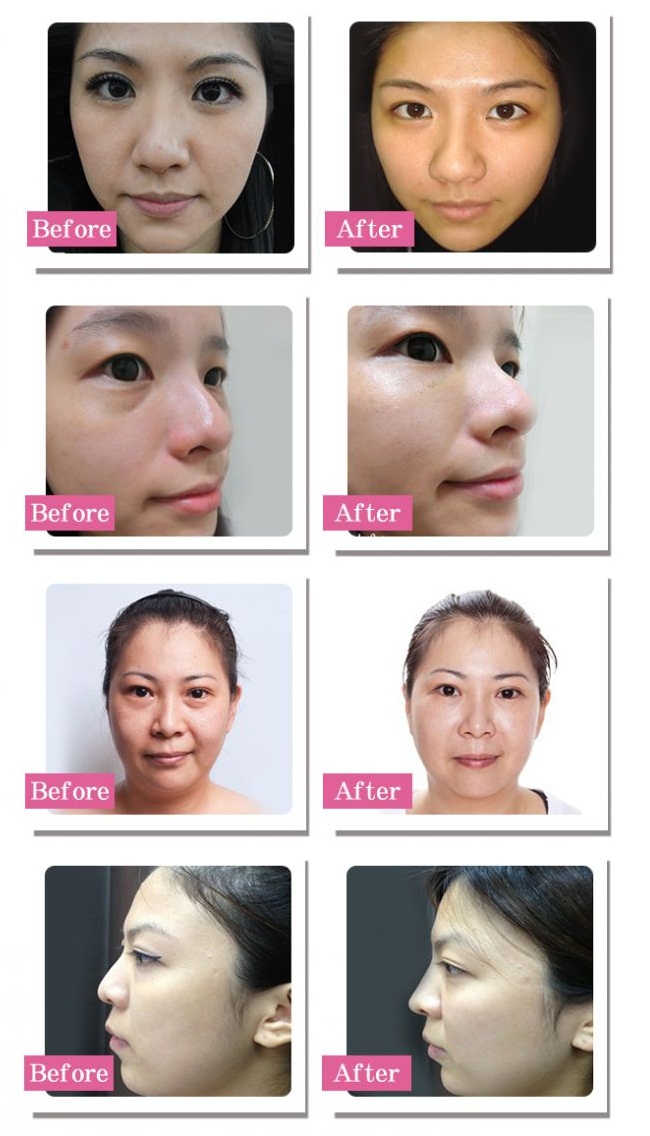The most promising material for soft tissue augmentation today is Hyaluronic Acid and its derivatives. Hyaluronic acid, also known as hyaluronan and glycosaminoglycan, plays a key role in both tissue hydration and lubrication. Stated simply, the compound takes years off the life of skin; it helps make skin vibrant, supple, and moist.
All living organisms have hyaluronic acid in their bodies. In humans this substance creates volume in the face, giving it a healthy, young appearance.
Our skin is made of two layers. The area in-between the layers holds hyaluronic acid. While young,hyaluronic acid is in abundance. Our bodies gradually lose this acid as a result of exposure to sunlight and pollutants. Therefore, hyaluronic acid injection therapy is a wise choice for facial augmentation. The efficacy is comparable to collagen restorative therapy.
About Hyaluronic Injection Therapy:
- Hyaluronic acid has been shown to decrease dryness in the skin and revitalize the skin.
- As we grow older, hyaluronic acid between within our skin diminishes, and the skin collapses, causing a wrinkle along the line. With hyaluronic injections, the skin is restored and the wrinkle disappears.
- A treatment consists of injecting a clear gel being into the skin with a very thin needle.
- The injection restores the natural volumes underneath the wrinkle. The wrinkle is now lifted and smoothed out.
- Hyaluronic acid implantation can improve the skin’s contour and reduce depressions in the skin due to scars, injury or lines.
Indications for Treatment:
- Worry lines that run across the forehead (forehead lines)
- Crow’s feet at the corner of the eyes (periorbital lines)
- Frown lines that run between the eyebrows (glabellar lines)
- Smoker’s lines which are vertical lines on the mouth (perioral lines)
- Marionette lines at the corner of the mouth (oral commissures)
- Deep smile lines from side of the nose to corners of the mouth (nasolabial furrows)
- Cheek depressions
- Redefining lip border
- Acne scars
- Some facial scars
FDA Approval
Publication Date: 19–NOV–03
The U.S. Food and Drug Administration’s (FDA) clearance of a new class of soft tissue fillers may give Hyaluronic Acid–based injectables the potential to become the next “hot shot” for erasing wrinkles. Used safely and effectively worldwide for years, Hyaluronic Acid is a naturally occurring element in human connective tissue.
Before Hyaluronic Injection Therapy
- Sign the Hyaluronic Injection Therapy consent form
- Technicians will thoroughly cleanse your face
- The treatment area is swabbed with an antiseptic.
- An anesthetizing cream will be applied to your face to numb the treatment area.
- Injection method means a series of small injections with a very fine needle
- The treatment takes 20 minutes to an hour, with minimal discomfort
After Hyaluronic Injection Therapy
- Depending on the area treated, the skin may be lightly massaged after the injections
- The results can be seen immediately.
- Common side effects may be pain, redness, swelling, itching, discoloration, and tenderness at the point of injection. These side effects typically subside within two days of the injection procedure.
- Another one or two treatments (at least a week apart) may be necessary to achieve the desired correction.
- Time for re–treatment following injections is typically 6 to 12 months.
Before & After Photographs





